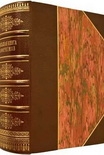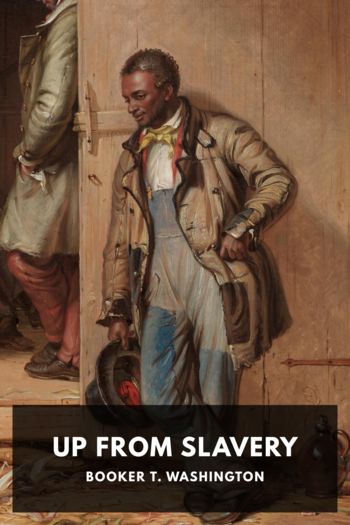A Calculated Risk, Katherine Neville [english novels for students txt] 📗

- Author: Katherine Neville
Book online «A Calculated Risk, Katherine Neville [english novels for students txt] 📗». Author Katherine Neville
“Yes,” replied Kawabata. “The government was very angry with me for that. After my gallery opening, they came to my house and conducted a thorough search, looking for other plates. They thought I was a professional counterfeiter, but I explained that I was merely attempting to show the state my art has achieved in the Western world. If you like, I will show you a print from that series that they did not confiscate.”
Georgian agreed that she’d like that very much. Kawabata led her into a room overlooking a small Oriental garden—the only room whose windows were not covered with paper. The garden was beautiful, with its small pool and smooth black stones paving the walks between beds of carefully trained bonsai trees. The floor of the room was covered with willow matting, and hand-painted cushions were placed about the periphery.
On one wall was a small engraving about one foot in diameter. The background was a dark plummy gray, beautifully textured. At the center of the engraving was a small apple on a table, and beside it, propped up on end to face the viewer, a perfect dollar bill. It looked as if it had been pasted, in collage, into the picture; the color was perfect, the lines were flawless.
“This is magnificent,” murmured Georgian. She took a dollar bill from her handbag and compared it with the one in the print.
“That is a photoengraving,” Kawabata replied in his soft-spoken voice. “I actually photographed the bill separately from the apple and the table, then I overlaid the two photographs. I did the plates separately. If you are interested, I will show you how it’s done.”
He conducted Georgian into a room that contained several small printing presses and a larger one. The hand presses sat on hard wooden tables at one side of the room; the large press was against the far wall. The floor was protected by heavy tarpaulin. At center, a large-format camera was suspended from heavy exposed beams where the ceiling had been removed. Beneath the camera stood an enormous table with a broad, smooth surface covered in clean white paper. Everything was immaculate. Georgian thought this was the cleanest print shop she had ever seen.
“Shall we do a sample print?” asked Kawabata. He pushed a button on the camera mounting; the camera lowered with a whir. “If you wish to do excellent engravings, you must use a large-format camera in order to secure a very high resolution print. The larger the negative, the more detail you will be able to achieve—just as in photographic printing. Such order of detail requires great patience and great perception. Take this photographic loup, and look at your dollar bill again.”
Georgian took the small glass cube he handed her, and looked through it at the dollar bill. In magnification, it seemed to leap to life. What had appeared a sea of sage-green embellishments now appeared as a myriad array of complicated dots, swirls, dashes, and carefully textured blackish-green shadows.
“When you observe the left half of the Great Seal, the one with the pyramid of Egypt,” Kawabata was saying, “you will notice that the Masonic mystic eye suspended above it is surrounded by age lines! It is that kind of precision we must aim for.”
Georgian looked up from the loup. “What shall we print?” she asked.
“Why not your dollar bill?” asked Kawabata, smiling and picking it up from beneath the loup. “But let’s make it interesting. As this is merely an exercise, let’s pretend the dollar comes in many colors, as other countries’ currencies do.”
With a felt-tipped pen, Kawabata carefully colored in the mystic eye in red, so that it looked as if it had spent a rough night over the pyramid.
“This way, I can show you some more sophisticated engraving techniques. Young people nowadays are often in a great hurry to get somewhere, without really knowing where they are going. But engraving cannot be rushed. Engraving is like the tea ceremony; it must be done one step at a time, and each in its turn. Then it unfolds its secrets to you, like a flower.”
Kawabata took her to the darkroom beside his studio and there showed her the painstaking, step-by-step processes required to mask the photo plates, coat the engraving plates with photosensitive emulsion, prepare the acid baths, and carefully time each part of the operation. It was similar to the film development and printing process, but Kawabata stressed the importance of taking extreme care in each precise detail—well beyond the level of cleanliness and care required to produce an excellent photograph.
“To mix a color,” said Kawabata when they’d rinsed the last plate and carefully dried it, “even if the color is only black, it must be the right black. You must feel it in your soul. Now we must go to my study to meditate.”
“Meditate?” said Georgian, confused.
“A master engraver must always meditate before he prepares the color,” said Kawabata, “in order that he may bring his soul’s vibrations into harmony with the universe.”
Georgian did not realize how late it was when they’d finished the printing. She and Kawabata were seated in the large living room where they’d had tea earlier. She sipped her warm plum sake and held the perfect red-and-green dollar bill between her fingers. She felt as if she’d just graduated from a ten-year course as a master engraver.
“Mr. Kawabata,” she said, dreamy from the exhaustion of the work and the effects of the hot sake, “I can’t tell you what this afternoon has meant to me. I’m going to go right home and start practicing everything you’ve taught me.”
“Do you have a press to work on?”
“No—but I imagine I can buy one. There must be presses listed for sale in the papers?”
“These new presses all have automatic color mixers on them. They are quite sophisticated, if you wish to do assembly-line printing. But for an artist such as yourself, I think it would be preferable to use an older style of press, where everything can still





Comments (0)